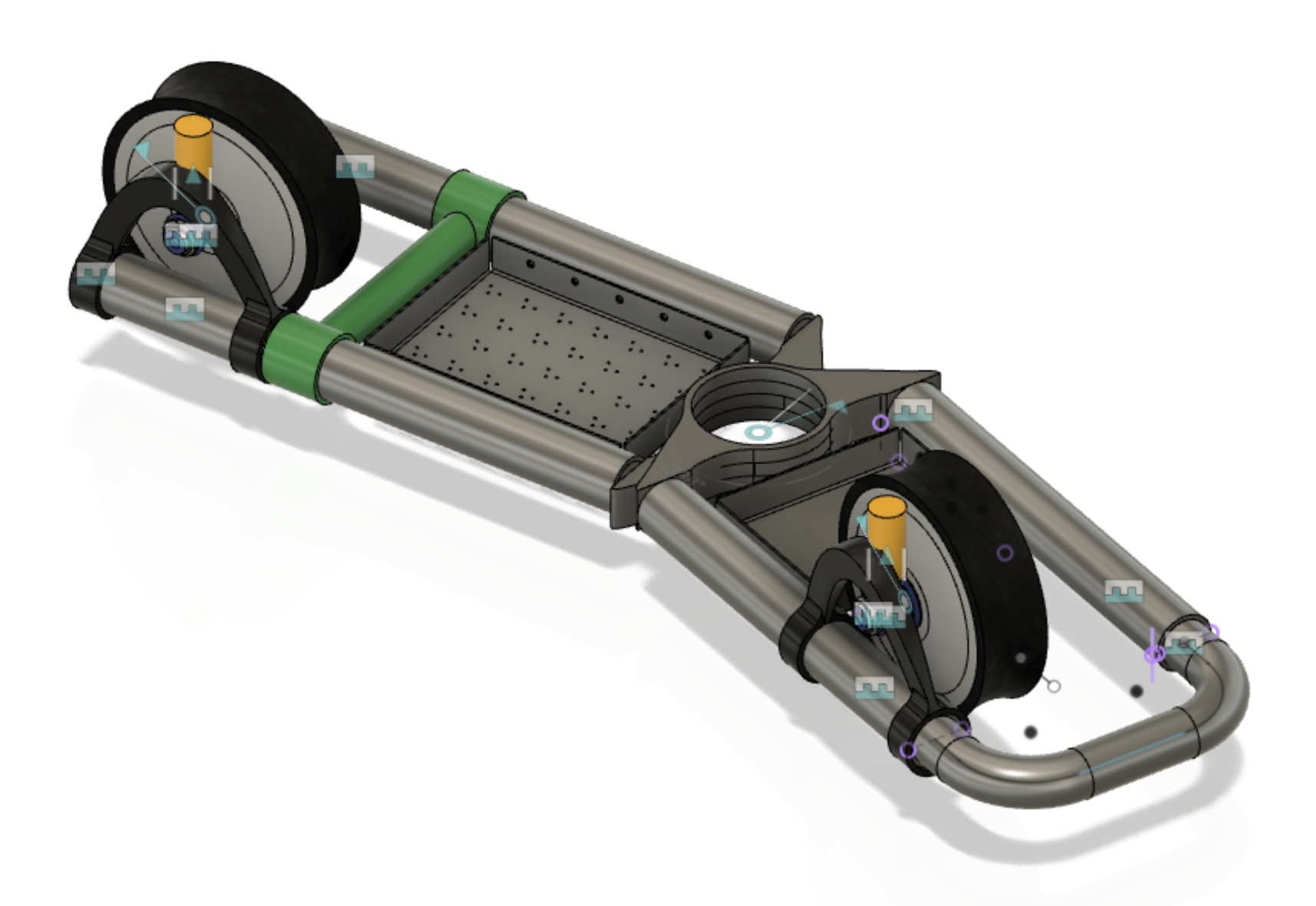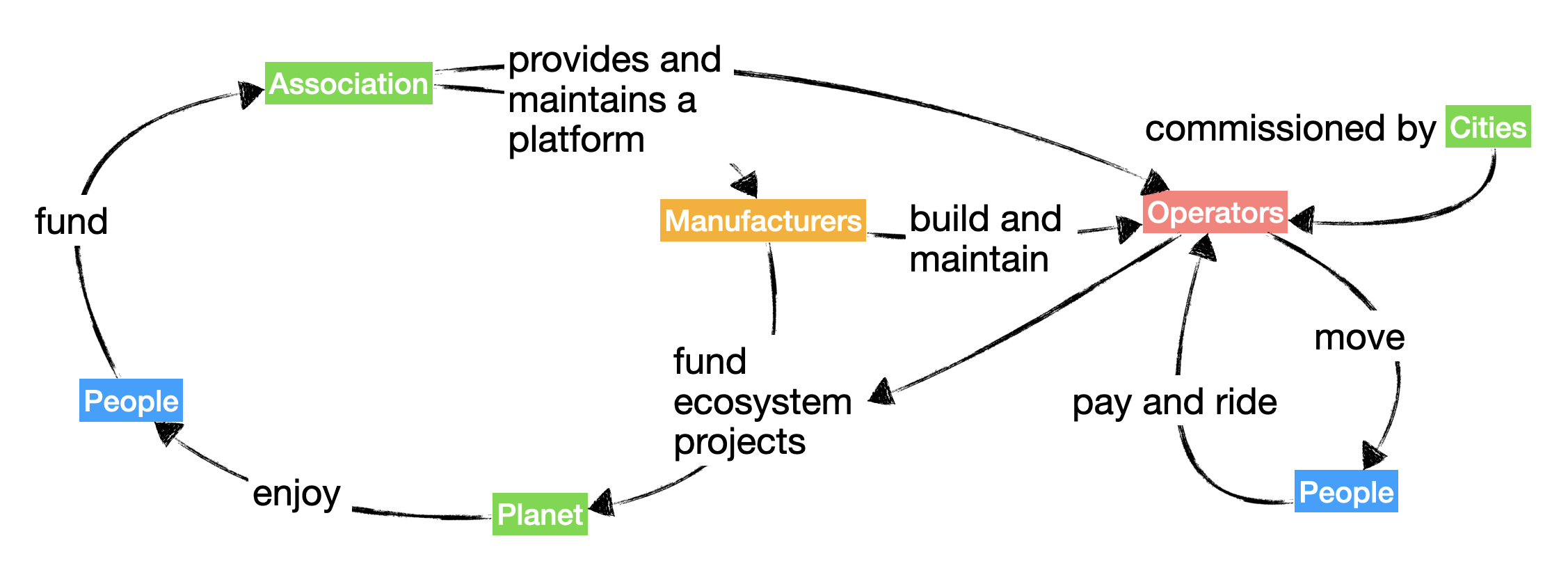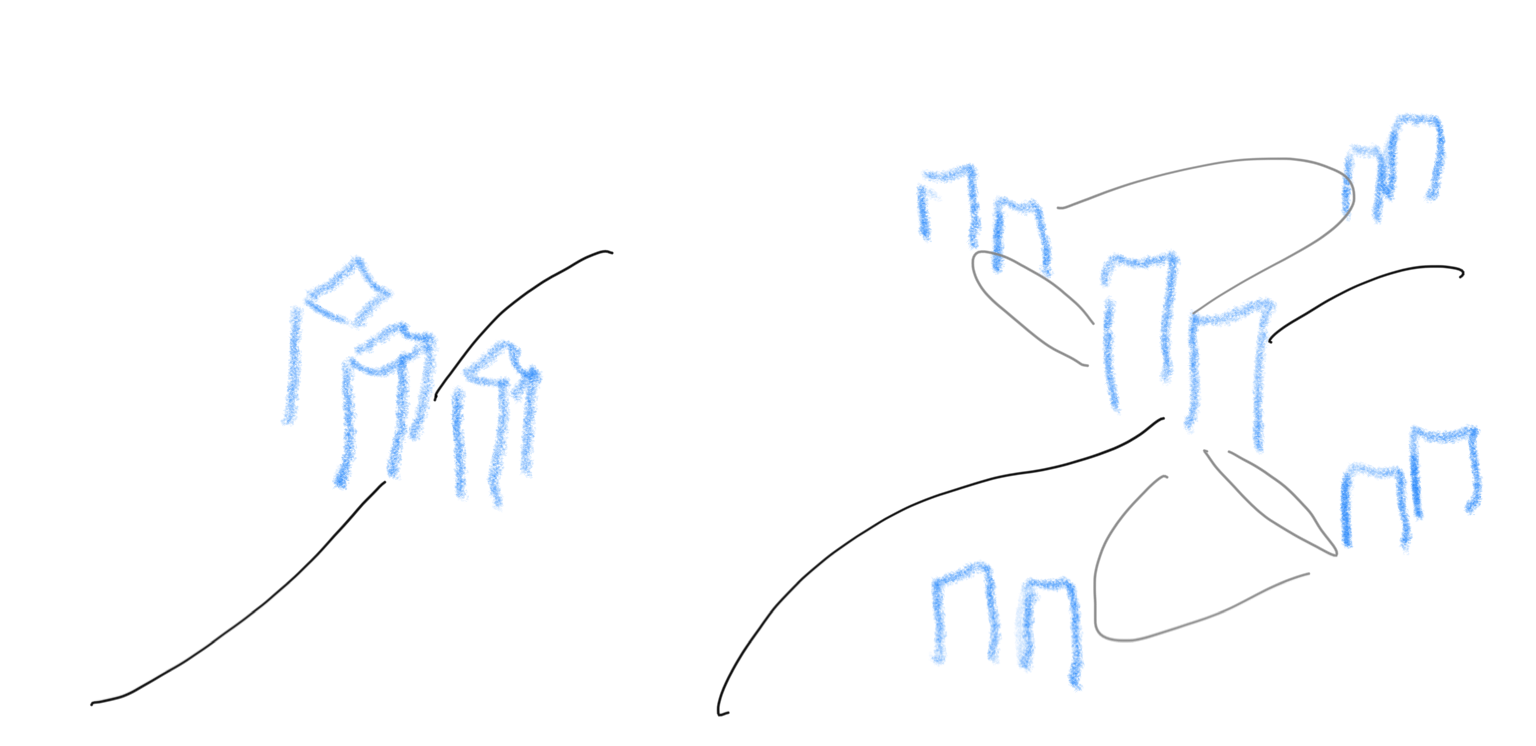# Kotka - a platform for ultra light rail
Making of a 21st century vehicle platform:
- capable of transporting 2-3 people (240kg)
- running on a rail, in the air
- speeds ~40..70 km/h
- buildable by readily available or easily manufacturable parts
- easily fixable
- fully "transparent"(*) to the nature
(*) Zero carbon footprint, low ground footprint, low noise and illumination footprint, fully recyclable track, stations and vehicle components.
# Short history of PRT
This mode of transport is called "PRT" or Personal Rail Transit, by some. It could be an electric solution for what traffic planners call "feeder systems" - ways for people to reach the metro/rail/subway station. It can also be used as a "community metro" for populations as low as 20 000 people, or a campus track for universities, hospitals or company campuses.
If cheap, reliable and comfortable to ride, such an offering could transform 2020's transportation planning. Maybe even city planning, since instead of building high-rises near the stations, the reach of PRT would allow people to live further apart from the station (in distance), yet equally close in time.
🍌
Figure 1. Less this; more that.
Since the tracks are above the ground ("off grade" in transport planner parlance), the tracks don't cause hindrance to other transport in the way that roads or trams do. You can walk, bicycle or drive below them.
# Who should build it?
PRT's have been around. It's never "flown" commercially so either it's not possible, or the models used earlier have been missing something. The deal is to get this into transport planning mainstream - to make it a hard-to-pass reality that customers (cities) ask of the planners. That, again, needs citizens to be aware so they know about the possibility. 😊
The model taken here is to JUST HACK IT!!
Aim for this stage is to make a working proof of concept that shows the potential. Making it out in the open so that people with various skills (CAD, electronics, mechanics, pneumatics, embedded software, cloud software, PR, video production) can contribute.
Making it FUN. For the makers. For the backers. For the general audience.
Let's ROLL!
# CAD Model
🍌
Asko (the founder) made an initial model in 2019, but something went wrong. It's not supposed to look like thisFusion 360 project (opens new window):

Learning from the mistakes, a new start was made in 2020.
This time, the models are spread over multiple Fusion 360 projects. Having everything in a single "file" turned out to be making things harder and harder to fix (and easier and easier to break).

That's better.
Note: This image lacks crucial elements and is outdated. But it shows a minimum set of components that can be designed, assembled, tested and iterated upon.
# PBS and the CAD designs
There is a Product Breakdown System for numbering the parts and keeping track of their maturity.
The CAD files are available in Fusion 360, for people wanting to help and agreeing to the license terms.
This repo aims at being a narrative for the CAD models, discussing decisions behind them, alternatives not taken, pros, cons, design criteria. Anything we cannot place in the CAD models, themselves.
We provide:
- Access to the PBS sheet, per request
- Access to the CAD files, per request
- [ ] tbd. chat. Should we use Gitter, Discourse or what??
Note: The Marble Music Machine project by Wintergatan (opens new window) (Patreon) / Martin Molin has been a strong inspiration for how to orchestrate this effort. You'll do well checking his project out! 😃
# Collaboration
# Forums
This area is work-in-progress. Expect meaningful forums by summer 2020.
For now, you can reach the author on Twitter: askokauppi (opens new window)
# License
The CAD models are proprietary (copyright Asko Kauppi), for now.
The content is likely to be released as CC BY-NC-SA 4.0 (opens new window) but this has not been decided, yet (Apr 2020). If you have opinions about the licensing, please be in touch.
The purpose of the effort is to lay an open source foundation, upon which companies could build their implementations.
# Commercial Licensees
There will be burdens for such commercial implementations. They can e.g. be required to contribute X % of their profits, or Y % of their revenue (whichever is higher) to a biodiversity restoration / protection program, approved by the Association.
The Association might not need to be funded by the companies benefiting from its work. This should help keep it relatively unbiased, and being able to focus on technical prowess instead of chacing market demands, which would happen if companies gained undue influence.

Business models involvedsource (opens new window)
This makes a win-win-win out of the deal. Details need to be crafted and detailed, once we get there. But it's not going to be an unlimited free ride for corporations, either.
# References
- How to Organize Your Project with a PBS system - Marble Machine X #57 (opens new window) (Youtube Oct 2018; 18:27)
